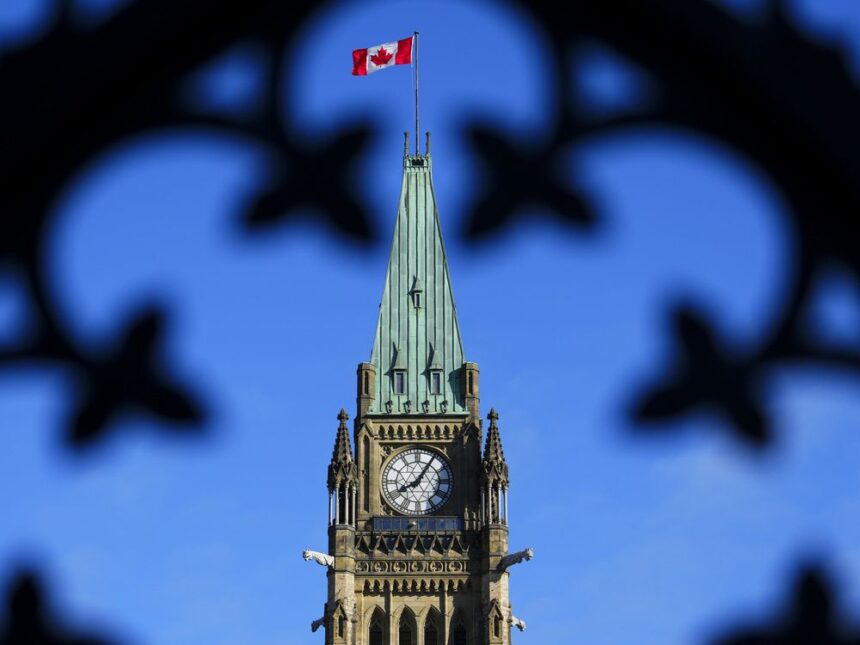In the world of institutional investing, a subtle but significant shift is taking place north of the 49th parallel. Canadian pension giants, long celebrated for their global investment prowess, are increasingly looking inward at their own backyard.
The Public Sector Pension Investment Board (PSP Investments), which manages approximately $243.7 billion in assets for federal public servants, the Canadian Forces, the Royal Canadian Mounted Police, and the Reserve Force, has recently signaled a strategic pivot toward boosting its domestic portfolio. This comes amid mounting pressure from Ottawa to keep more capital within Canadian borders.
“We’re seeing a recalibration of investment strategy that balances global opportunity with national economic interests,” says Lekan Olawoye, founder of the Black Professionals in Tech Network, who tracks institutional investment trends. “It’s not just about returns anymore—it’s about fostering Canadian innovation and long-term economic resilience.”
The timing is particularly noteworthy. As the U.S. presidential election looms on the horizon, bringing potential trade and economic policy uncertainties, Canadian pension funds are reconsidering risk exposure. PSP’s domestic investment push appears partly motivated by these geopolitical considerations, alongside governmental nudging toward supporting Canadian businesses, infrastructure, and economic development.
Looking at the numbers tells an interesting story. According to the Pension Investment Association of Canada, major Canadian pension funds collectively hold only about 35% of their assets domestically, a figure that has declined steadily over the past decade as funds pursued diversification and higher returns in foreign markets.
PSP’s current asset allocation includes approximately 14% in Canadian equity and fixed income, with the remainder spread across international markets and alternative assets. The fund has delivered a solid 10-year annualized return of 8.4%, outperforming many of its peers globally.
But domestic investment comes with its own set of challenges. The Canadian market represents only about 3% of global market capitalization, creating natural limitations for large funds seeking sufficient investment opportunities. Moreover, the TSX remains heavily concentrated in financial services and natural resources, offering less exposure to high-growth technology and healthcare sectors compared to U.S. markets.
“The scale issue is real,” explains Dominique Dionne, former vice-president of public affairs at PSP Investments. “When you’re managing hundreds of billions, finding enough Canadian investment opportunities that meet your risk-return requirements becomes increasingly difficult. That’s partly why these funds went global in the first place.”
Despite these constraints, PSP and other Canadian pension giants are getting creative about domestic allocation. Rather than simply increasing public market exposure, they’re exploring direct investments in private Canadian companies, infrastructure projects, and real estate developments that align with long-term economic trends.
Recent examples include PSP’s $600 million commitment to Northleaf Capital Partners’ private credit fund focused on mid-market Canadian companies and its partnership with Dream Industrial REIT to acquire logistics properties across Canada.
The Government of Canada, meanwhile, has been increasingly vocal about wanting pension funds to support national priorities. Last year, Finance Minister Chrystia Freeland specifically highlighted the importance of institutional investors in backing Canadian innovation and clean energy transition projects.
This governmental influence raises questions about pension fund independence. Traditionally, these institutions operate at arm’s length from government, with fiduciary responsibilities to deliver returns for their beneficiaries. Any perceived political interference in investment decisions could potentially compromise this mandate.
“There’s always a delicate balance between national economic policy and pension fund autonomy,” notes Erin Weir, economist and former MP. “The funds’ primary obligation remains to their pensioners, not to function as sovereign wealth funds or policy instruments.”
The growing focus on environmental, social, and governance (ESG) considerations may actually be facilitating this domestic pivot. Canada’s emphasis on clean technology, sustainable resource development, and responsible mining practices for critical minerals aligns with global ESG trends, potentially creating investment opportunities that satisfy both return requirements and stakeholder values.
For everyday Canadians, this reorientation of pension capital could have meaningful implications. Increased institutional investment in Canadian businesses might improve access to growth capital for domestic companies, potentially boosting job creation and economic activity. Infrastructure investments could modernize aging systems while generating the stable long-term returns pension funds seek.
Looking ahead, pension experts suggest this domestic emphasis will likely continue regardless of U.S. election outcomes or short-term market conditions. The combination of geopolitical fragmentation, supply chain restructuring, and growing focus on national economic security has fundamentally altered how institutional investors think about geographical allocation.
“We’re not returning to the hyper-globalized investment environment of the 2000s,” observes Mark Wiseman, former CEO of the Canada Pension Plan Investment Board. “Every major pension fund globally is reconsidering home bias versus international exposure in light of changing economic realities.”
For PSP and its peers, the challenge will be maintaining competitive returns while increasing Canadian content in their portfolios. Their approach will likely involve carefully selected direct investments rather than simply increasing index exposure to Canadian public markets.
The Canadian investment landscape offers both opportunities and constraints. On one hand, the country’s stable political environment, strong financial system, and rule of law provide solid foundations for long-term investment. On the other, Canada’s relatively small market size and sector concentration limit the universe of suitable investments for entities deploying billions of dollars.
What’s clear is that the next decade will see Canadian pension giants playing an increasingly visible role in domestic economic development while still maintaining global diversification. Finding that sweet spot between patriotic capital and prudent global investing may well define the next chapter of Canada’s pension investment strategy.






